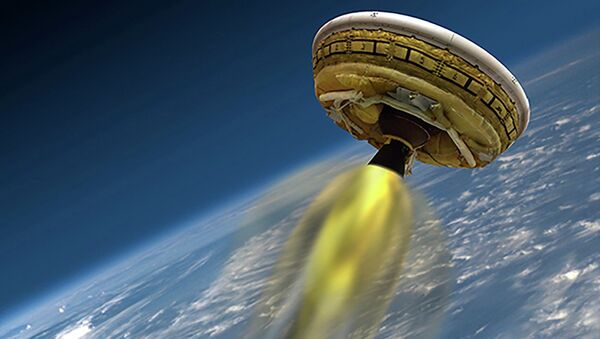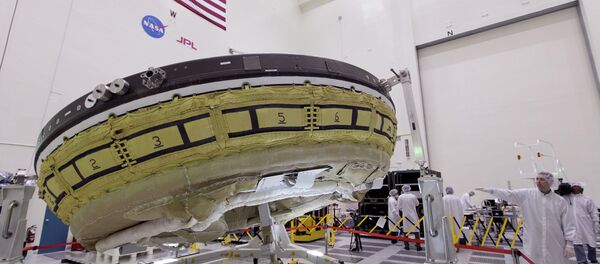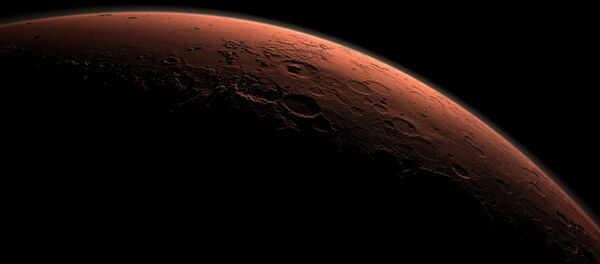WASHINGTON (Sputnik) – NASA completed the second LDSD flight test on Monday with its saucer-shaped craft splashing down in the Pacific Ocean off the coast of the Hawaiian island of Kauai.
"Two experimental decelerator technologies – a supersonic inflatable aerodynamic decelerator [inflatable cushion] and a supersonic parachute – were tested. The supersonic inflatable aerodynamic decelerator deployed and inflated. The supersonic parachute also deployed; however, it did not perform as expected," NASA said in a Monday blog post on its official website.
Data from the test will be used to improve the technology, NASA said on its website, adding that it will organize a conference to review the test on Tuesday.
NASA’s first LDSD flight test, conducted last year, ended with a parachute malfunction as well.
NASA’s LDSD technology is crucial for future human missions to the Red Planet as it aims to enable the landing of heavier payloads on Mars. Current NASA technologies limit Mars payloads to about a ton, which is not enough to deliver the equipment required for a human mission.





